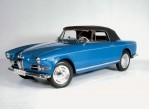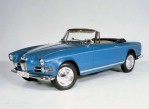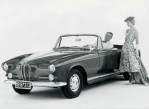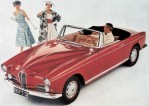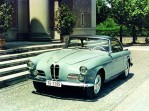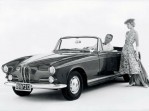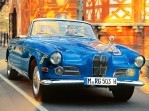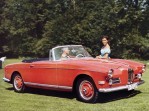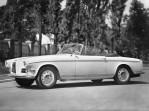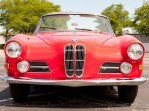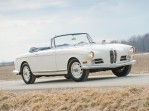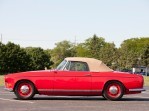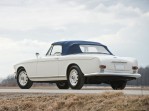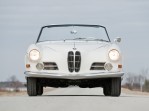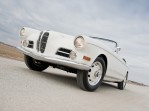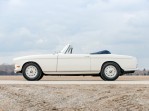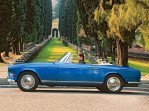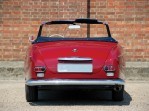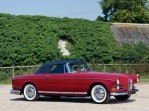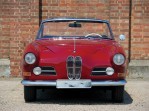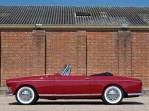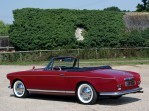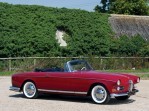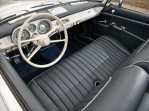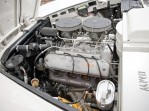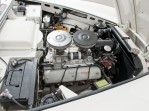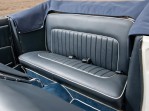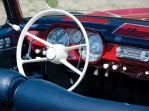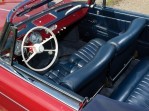Body style: Coupé (two-door)
Segment: Roadster & Convertible
Production years: 1956, 1957, 1958, 1959
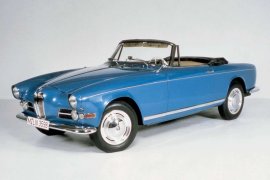 29 Photos
29 PhotosA vehicle that impressed the car industry back in 1956, the BMW 503 cabriolet was the first one to feature an electric soft top as standard equipment. Its chassis was entirely made out of aluminum with its design not following any trends from abroad, entirely produced and designed at BMW.
The cabriolet was the 50s’ most expensive car, being the first one with a light alloy V8 engine that developed 150hp. The 503’s top speed was at 190 km/h. Its price equaled the price of a single family home at that time.
The elegant cabriolet was a luxury car produced in 139 units only and not many could afford it, being bought especially by wealthy people such as factory owners or film stars.
The vehicle was awarded with gold medals at car shows held in Romes, Lisbon, Wien and Cannes for its original and smooth design.
The technology used for the 503 was rather simple, the car offering great comfort for long trips. Most of the technical parts were kept from the bigger sedans, the 501 and the 502 - the frame, the engine, the transmission and the axles were almost identical.
It seemed like the new 503 represented a turning point for the BMW design, shifting to a cleaner, simpler look with the proportions of a grand turismo - long hood and short rear end.
The interior of the 503 was beautiful and clean, with 3 round gauges and a metal dashboard, plus a few ivory colored buttons that completed the luxurious design.
By the late 50’s, BMW got on the verge of bankruptcy and managed to save itself by producing small cars like the Isetta. Of course, none of them had the power of the 503, but were nevertheless more affordable.
BMW 503 Cabriolet 1956, 1957, 1958, 1959
- 3.2L V8 4MT (140 HP)
BMW 503 Cabriolet
3.2L V8 4MT (140 HP)
ENGINE SPECS - 3.2L V8 4MT (140 HP) | |
|---|---|
| Cylinders: | V8 |
| Displacement: | 3169 cm3 |
| Power: | 103 KW @ 4800 RPM 140 HP @ 4800 RPM 138 BHP @ 4800 RPM |
| Torque: | 164 lb-ft @ 2500 RPM 222 Nm @ 2500 RPM |
| Fuel System: | 2 Carburetors |
| Fuel: | Gasoline |
PERFORMANCE SPECS | |
|---|---|
| Top Speed: | 118 mph (190 km/h) |
| Acceleration 0-62 Mph (0-100 kph): | 12.8 s |
TRANSMISSION SPECS | |
|---|---|
| Drive Type: | Rear Wheel Drive |
| Gearbox: | 4-speed manual |
BRAKES SPECS | |
|---|---|
| Front: | Drums |
| Rear: | Drums |
TIRES SPECS | |
|---|---|
| Tire Size: | 6.00 H 16 |
DIMENSIONS | |
|---|---|
| Length: | 187 in (4750 mm) |
| Width: | 67.3 in (1709 mm) |
| Height: | 56.3 in (1430 mm) |
| Front/rear Track: | 55.1/55.9 in (1,400/1,420 mm) |
| Wheelbase: | 111.6 in (2835 mm) |
| Ground Clearance: | 7 in (178 mm) |
| Aerodynamics (Cd): | 0.44 |
WEIGHT SPECS | |
|---|---|
| Unladen Weight: | 3230 lbs (1465 kg) |
| Gross Weight Limit: | 3968 lbs (1800 kg) |
FUEL ECONOMY (NEDC) | |
|---|---|
| Combined: | 16.8 mpg US (14 L/100Km) |
